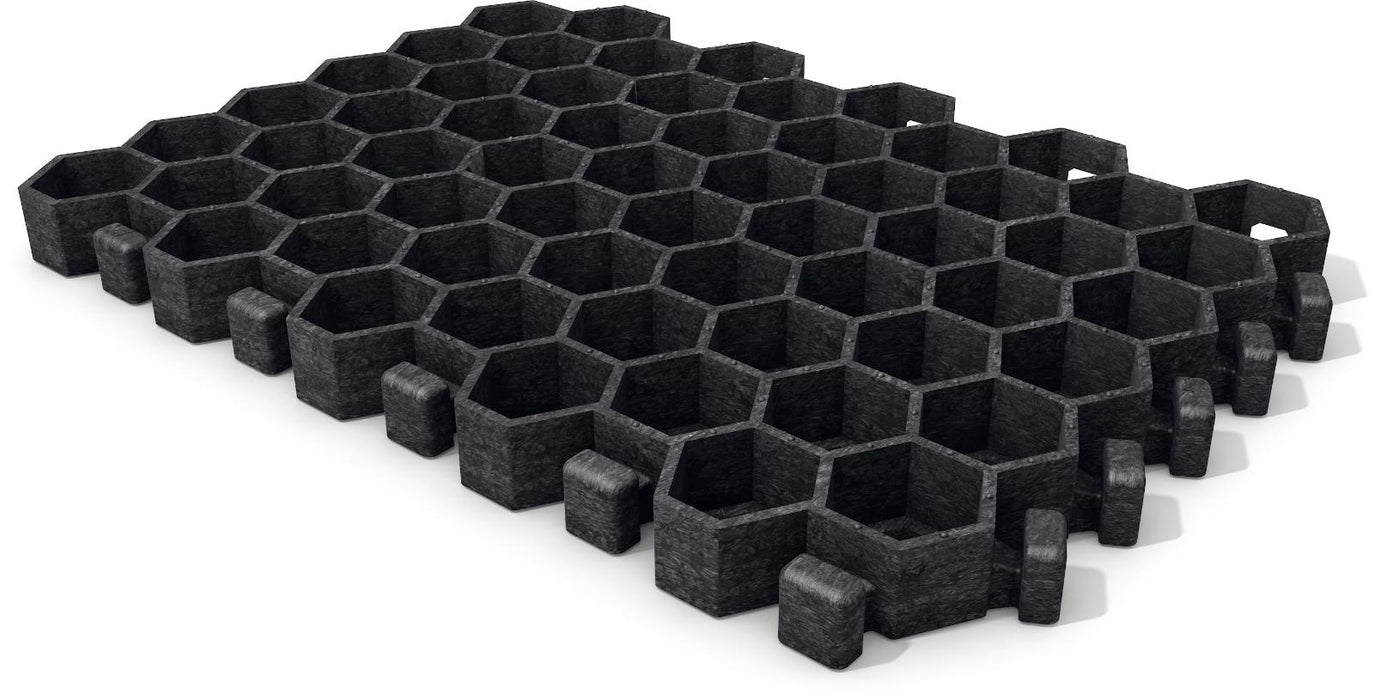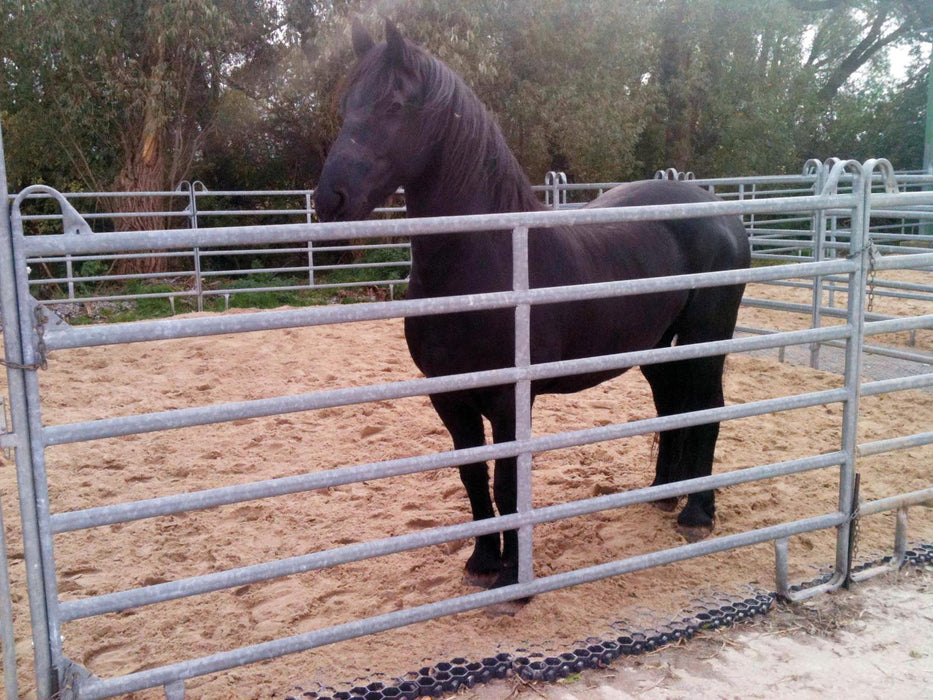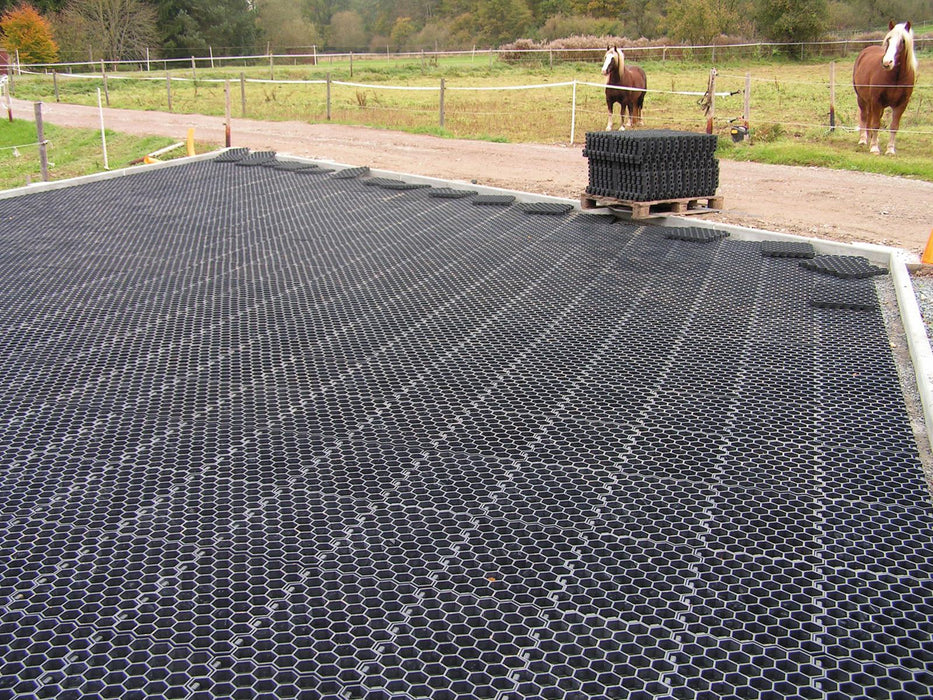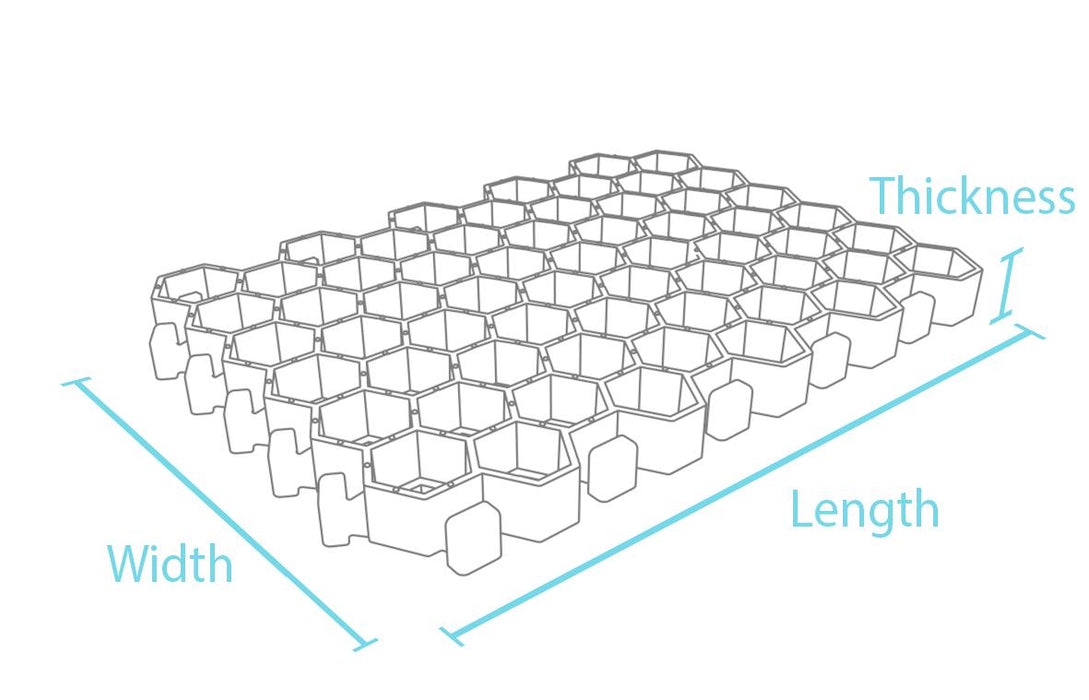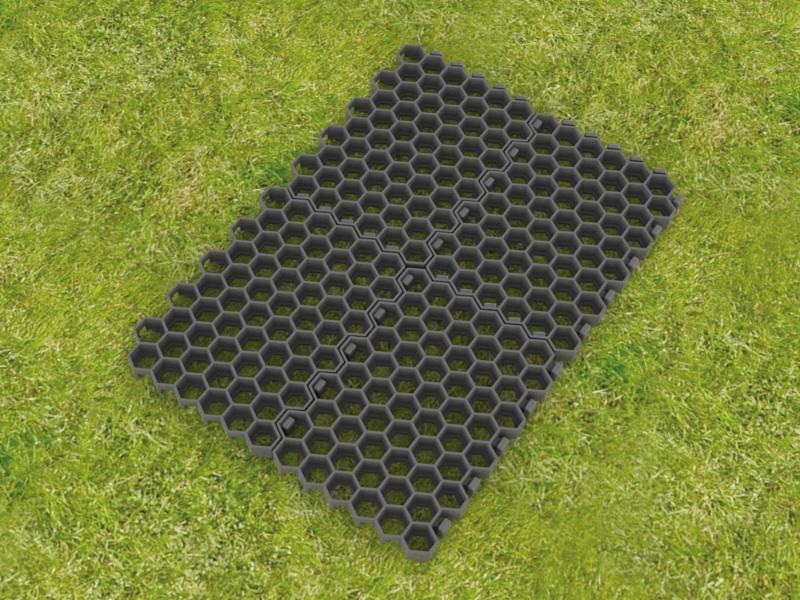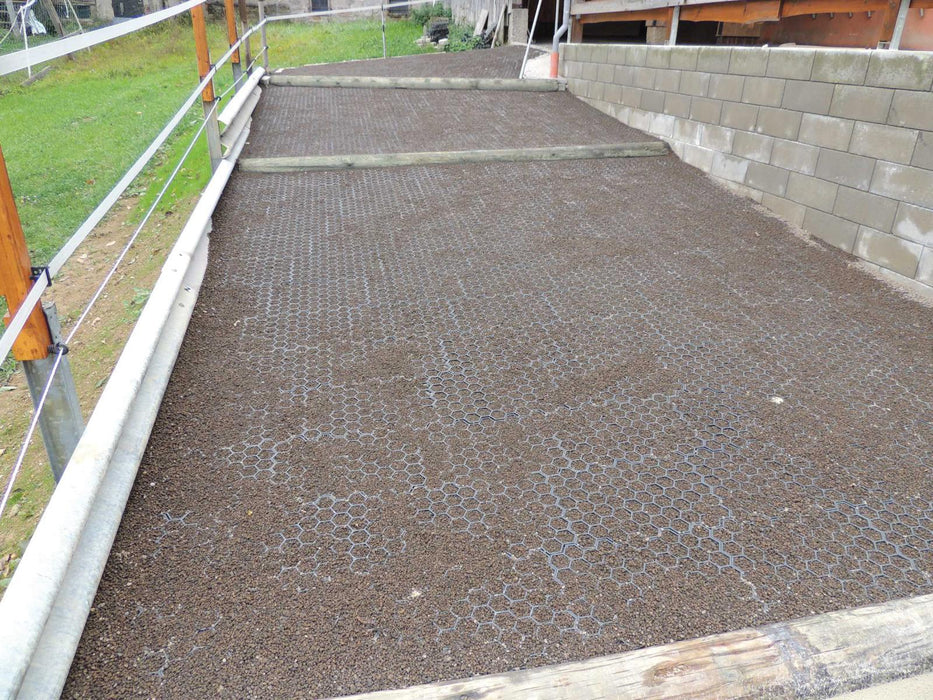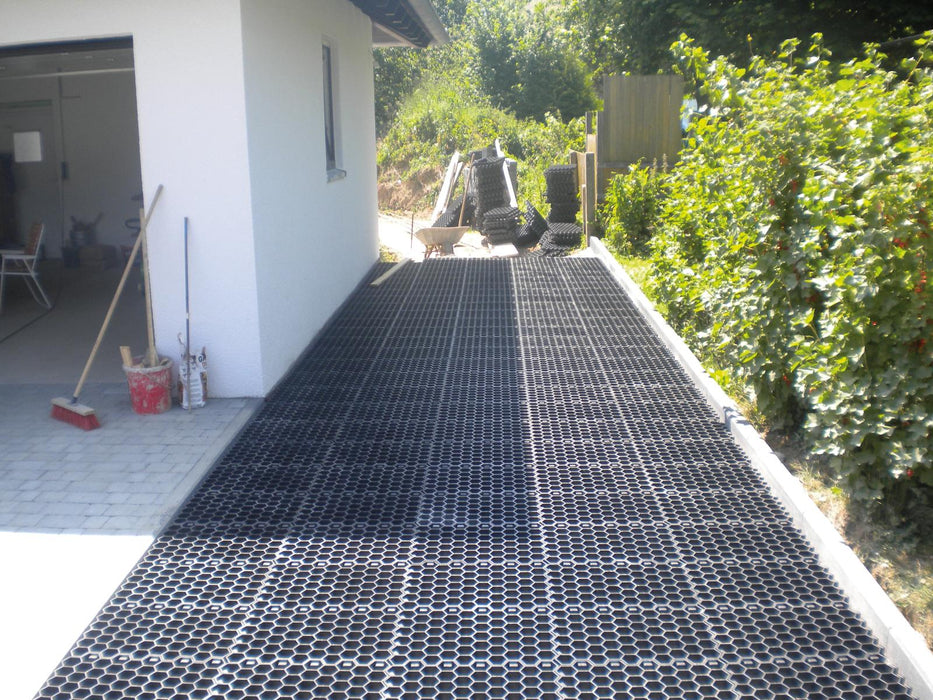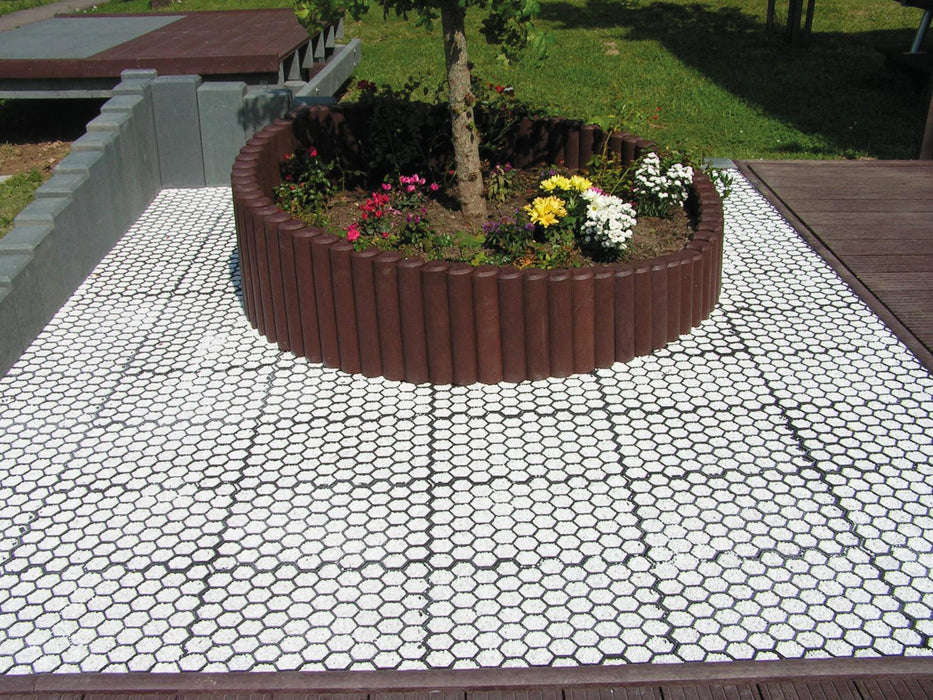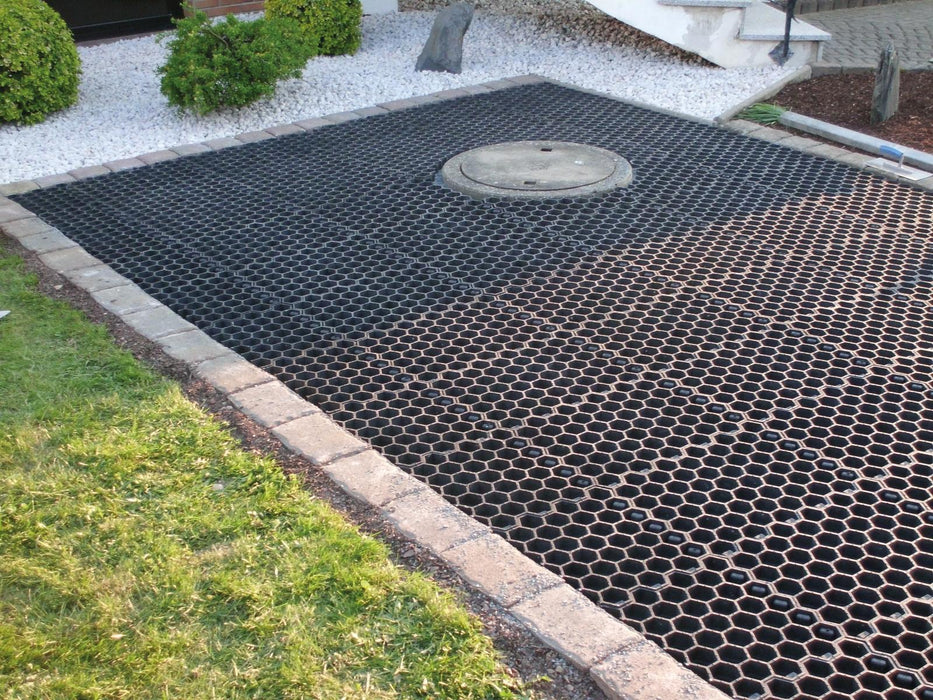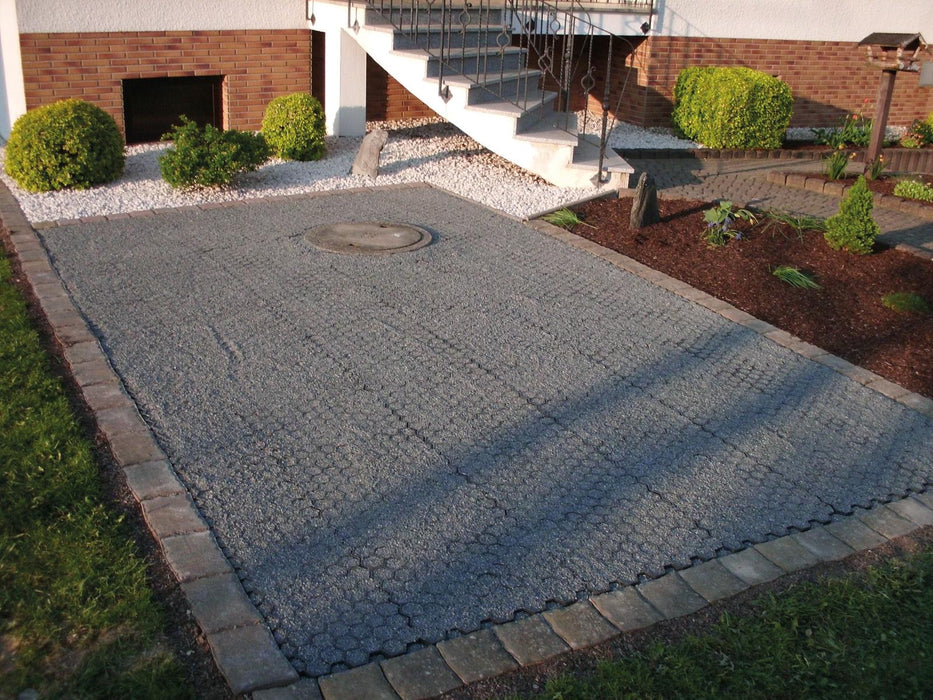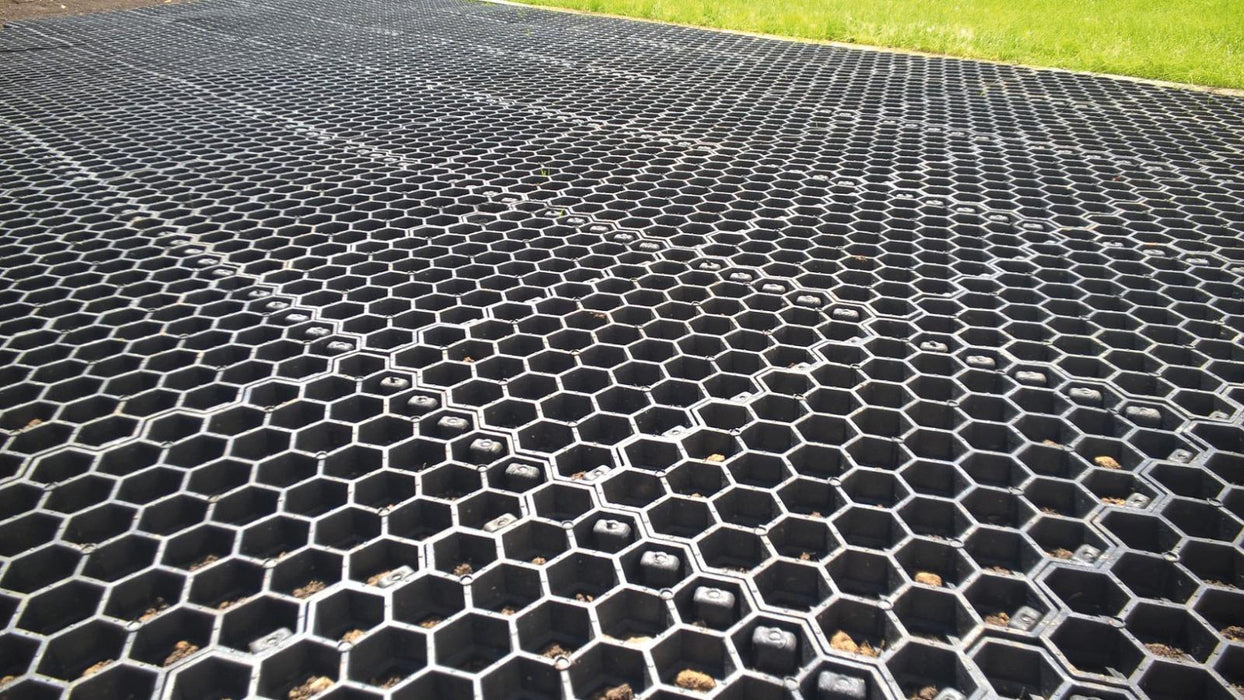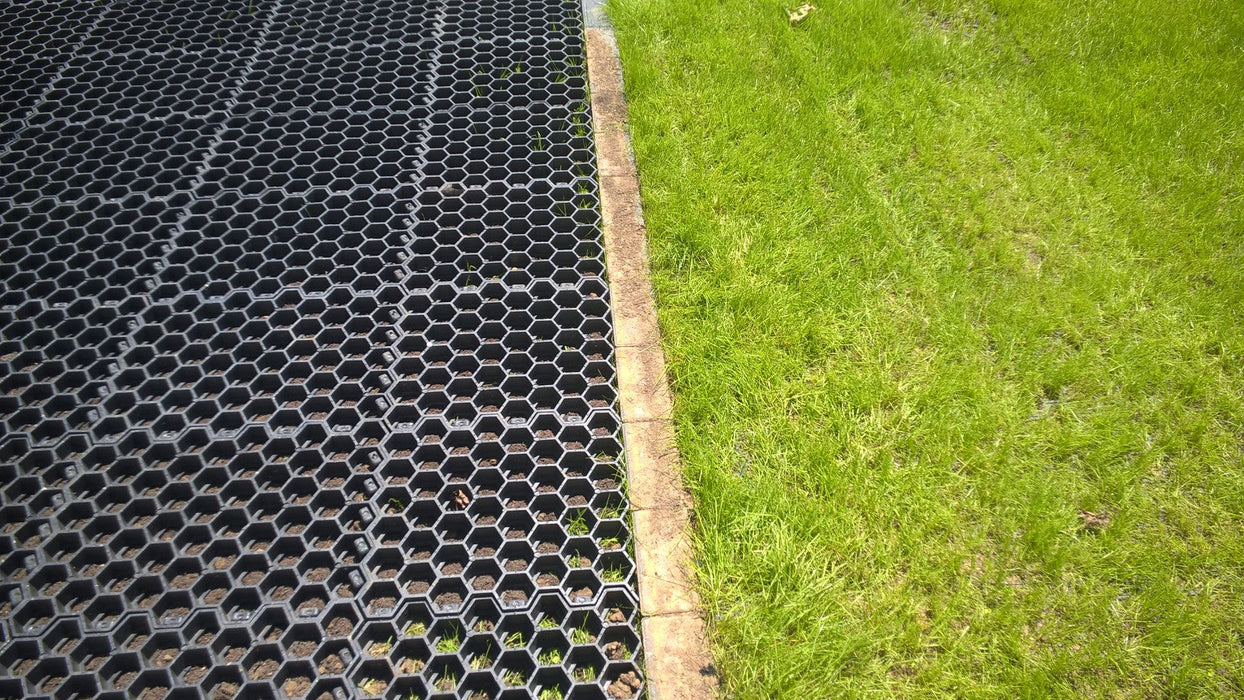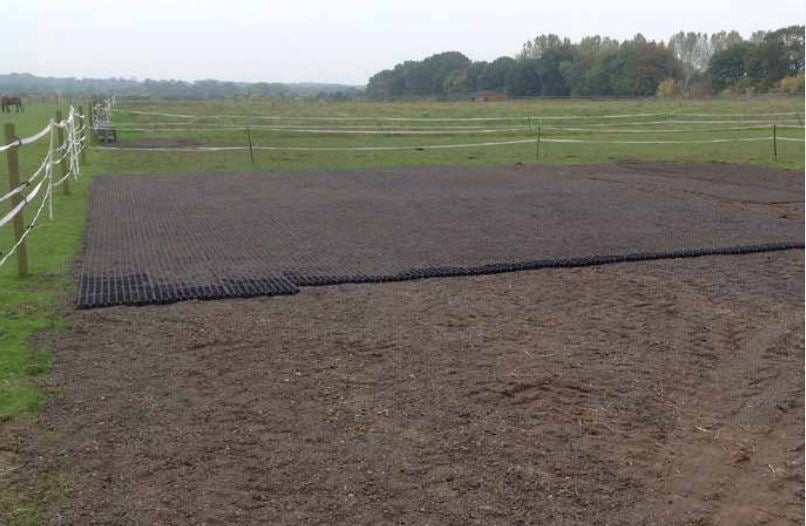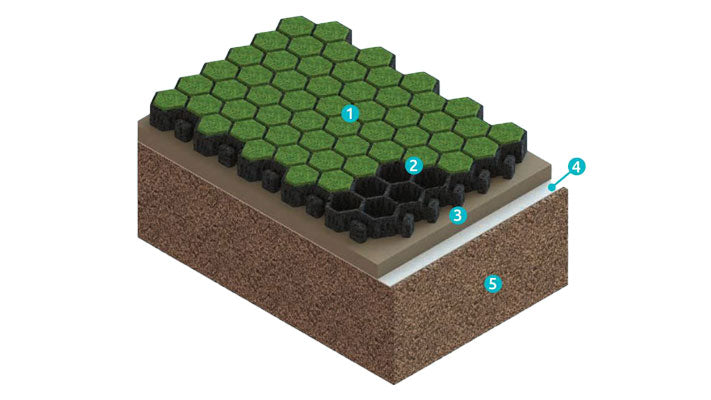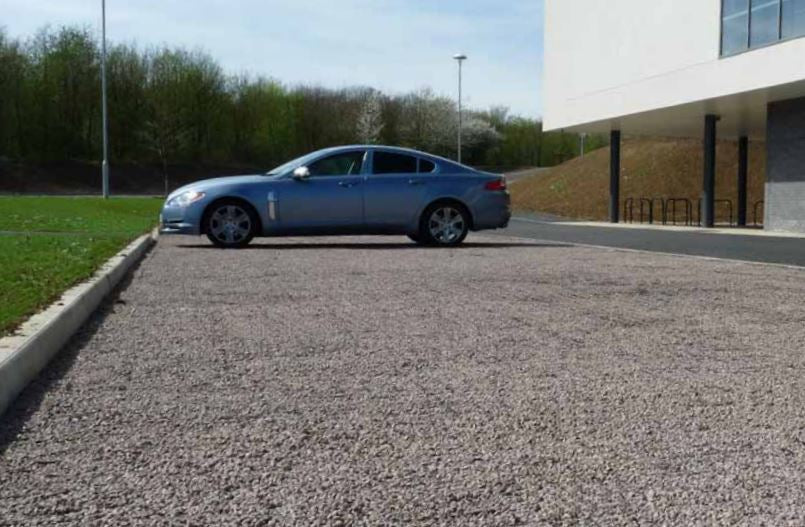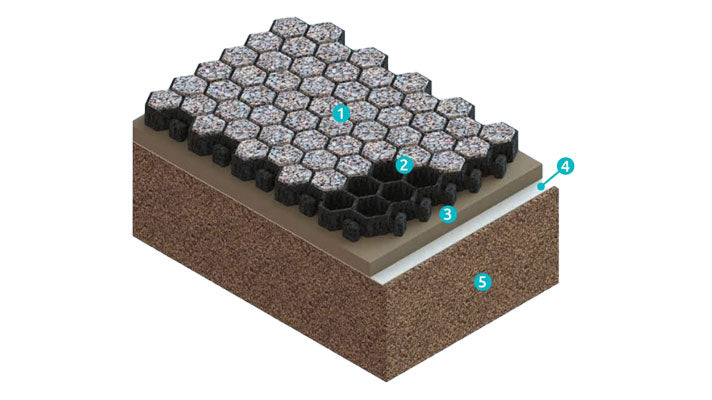This article will cover why a Paddock Slab is so important as well as the installation including the needed materials.
HAHN Paddock Slab is made from 100% recycled plastic for horses. It's designed to support and cushion horses' hooves and is even strong enough to support a truck. The cell wall is thick enough to support large horses but small enough to support both foal and pony hooves by creating a solid surface. The Paddock Slab is perfect for:
- Preventing mud
- Good for arenas & school surfaces
- Lunging rings & turnout areas
- Horse trailers, cars, and trucks
Tested
Standard ground reinforcement grids are just not good enough for equine use. The cell walls are too thin and can break and the cells are too big for smaller horses' hooves. Standard grids are made from hard plastic like HDPE that will not cushion or protect hooves on impact.
Flexibility & Strength
A standard test for heavy-duty loads is HS25 and during an independent test, Paddock Slab met all standards. Even when unfilled, they can support almost 465 psi or 73,090 lbs when filled with soil, sand, gravel, or grass.
A Paddock Slab can support 1,350 psi or 228,300 lbs which is more than enough for large horse trailers, trucks, and other horse requirements.
Keeping in mind, strength without flexibility can cause cracking, breakages, and eventual failure. When tested, Paddock Slab cell walls are flexible enough to withstand more than 10% without breaking.
About Hanit
Exclusively developed by Hahn, hanit is made from an extremely strong, versatile material of 100% recycled plastic. Unlike wood, concrete, or steel, the weather is never an issue for hanit.
This product is lighter than concrete and cheaper than steel. It will not rot or rust, splinter with age, or crack in extremely cold weather. Paddock Slab is easy to work with, looks great all year round, and does not require maintenance. This product is completely moisture-repellent and does very well in wet or damp conditions.
It's produced without preservatives, is non-toxic, and is non-polluting. It also reduces pressure on landfills and is 100% recyclable.
Paddock Slab & Mud!
Mud can be a big problem for horses. It can soften hooves, and cause abscesses, mud fever, tendon/ligament issues, thrush, and lost shoes. It's good for drainage and protecting the ground from being churned up and is the best way to prevent mud. Good for mud-prone areas like paddock or turnout entrances, feed and watering areas, and sacrifice areas. Placing Paddock Slab on a free-drainage base will solve the problem.
Ideal for:
- General stable areas
- Riding arenas and schools
- Paddocks and pastures
- Barn parking & access for horse trailers
Standard Installations
Paddock Slab can serve as a stabilizing layer with a sand tread surface for arenas, walkers, and pens. Along with gravel fill, it's used for general access areas and horse trailer parking. Along with grass fill, it will prevent mud in paddocks. Whatever the reason, Paddock Slabs offer good drainage that is critical for preventing excessive water mixing with the infill.
Installation Without A Base
If installed on a stable base, Paddock Slab can be used directly over levelled mud due to its strength and wide base. Deformation of the stabilized area should be expected as hooves create extensive point loads.
Preparation of the area
Before installing, remove topsoil and level the base.
Infilling The Area
You will need approximately 8 Cubic feet of gravel or topsoil per 100 square feet
Expansion
Paddock Slab has integral T connectors that can absorb up to 1/16-inch of movement or expansion eliminating the need for expansion joints. Even though separate expansion gaps are not necessary, a 1-inch gap filled with gravel or topsoil should be left between the Paddock Slab and curbs or hard edging.
Arenas, schools, exercise areas, round pens & walkers
For a giving but solid surface, install the Paddock Slab as a supporting layer on an area with suitable drainage. Next, overlay the slab with a 3-4-inch tread layer of rubber, sand, fleece, etc.
Standard Construction
- 3-4” tread layer (sand, rubber, fleece etc.)
- 1 1/2” Paddock Slab filled with angular sand
- 1 1/4” compacted sharp sand or grit
- Non-woven 3 oz needle-punched geotextile
- 4–12” free-draining sub-base
Paddocks, exercise areas, sacrifice areas, feeding spots, tethering/ mounting areas & paddock gates
For an all-weather grass surface with great mud control, place the Paddock Slab on a free-draining sub-base. Backfill the area with topsoil and then turf or seed instead of a sacrifice area. For good soil protection and prevention of mud in areas such as paddock entrances, extend the slab area by approximately 16-feet into the paddock. Maintenance and mowing will not be affected.
Standard Construction
- Grass finish seeded or turfed
- 1-1/2-inch Paddock Slab filled with topsoil or sand fill
- 1-1/4-inch compacted sharp sand or grit
- 3 oz non-woven or needle-punched geotextile
- 4-12-inch free-draining sub-base
Grid with Grass Finish
Access and Trails, General Stable arenas, car parking & horse trailers
For a gravel finish that’s suitable for horses, install Paddock Slab on a free-draining base. Fill the cells with a well-graded angular gravel (3/16–5/8”) and compact.
A fine-grit top-dressing will maintain drainage levels and provide good hoof support. Paddock Slab is suitable for all horse trailers, including trucks.
Installation without a base
- Angular gravel finish (3/16–5/8”)
- 1 1/2” Paddock Slab filled with 3/16–5/8” gravel
- 1 1/4” compacted sharp sand or grit
- Non-woven 3oz needle-punched geotextile
- 4–12” free-draining sub-base
Grid with Gravel Finish
Sub Base Design
When the subgrade CBR is known and the permeability assessed, the depth of free-draining angular stone base can be calculated (note: standard base materials with a high degree of fines are not suitable for free-draining areas). Using a suitable thin plastic geogrid between the subgrade and the granular base can reduce the depth of base as shown below




